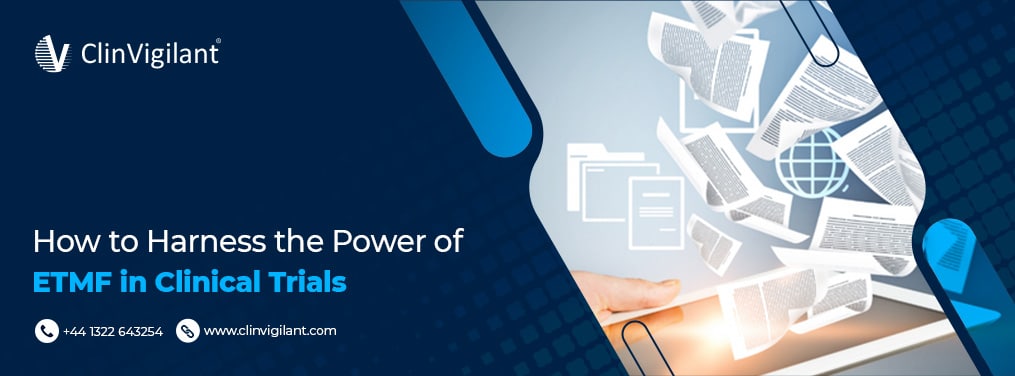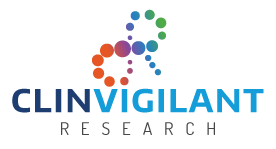Electronic trial master file (eTMF) systems are becoming indispensable tools for managing clinical trials in the life sciences industry. By transitioning from paper to electronic TMFs, companies can improve efficiency, ensure compliance, and get drugs to market faster. Here’s a guide on how to implement eTMF to streamline your clinical trials.

What is eTMF in Clinical Trials, and Why is it Important for Clinical Trials?
An electronic trial master file is a secure, online document repository that stores all records and documentation for a clinical trial. This includes items like protocol documents, ethics committee submissions, regulatory documents, sample consent forms, CRFs, drug accountability records, and more.
Maintaining an organized, complete, and accessible TMF is a critical compliance requirement. Regulators can request access to inspect TMFs at any time to ensure protocols, processes, and procedures were properly followed. Utilizing an eTMF system provides major advantages over paper including:
- Easy remote access by study teams and monitors
- Automated tracking of document workflows
- Version control for document revisions
- Centralized document storage and organization
- Indexed, searchable records across multiple trials
- Secure access controls and audit trails
By transitioning to an eTMF system, life sciences companies can save substantial time and resources while ensuring inspectors can access files easily. This results in faster study approval and drug commercialization down the line.
How do Healthcare Providers Use eTMF in Clinical Trials?
Clinical research sites and healthcare providers play a critical role in eTMF management during trials. Their responsibilities include:
- Maintaining site files containing consent forms, drug logs, local lab documents, ethics submissions and more
- Entering study data into EDC systems
- Uploading site file documents into the central eTMF repository
- Running document QC to ensure records are accurate and complete
- Providing monitor access to site files and addressing any queries
- Archiving site files after study completion
With eTMF systems, sites can collaborate more easily with sponsors. All required eTMF Clinical Trials documents can be uploaded directly to the central repository for automatic indexing. Study monitors can then immediately access site files remotely to perform checks rather than needing to wait for on-site monitoring visits.
Improving Trial Process Efficiency With eTMF
Paper TMFs are incredibly inefficient for conducting multi-site global trials. Documents must be physically shipped around the world, are prone to errors, and can only be accessed by one person at a time. eTMF delivers major improvements:
Real-time collaboration – Study team members, monitors, sites, and CROs can all access the TMF simultaneously with proper user permissions. This facilitates collaboration across geographies.
Automated workflows – eTMF systems incorporate electronic signatures, automatic version control, document event logging, and role-based permissions. This streamlines compliance by removing manual processes.
Dashboard insights – Managers can view real-time Trial master file in clinicial research metrics through dashboards to identify bottlenecks. Analytics tools allow drilling down into TMF backlogs, outdated documents, missing signatures, and more.
Centralized access – Rather than tracking down documents across sites, countries, and departments, eTMF stores everything in one validated document repository. Users log in to immediately search records globally.
With streamlined TMF accessibility and workflows, studies proceed faster and more efficiently using eTMF systems.
Increasing Patient Engagement With eTMF
Saving time and money are clear incentives for sponsors to use eTMF. But patients also stand to benefit in terms of both safety and engagement.
eTMF facilitates better oversight, ensuring consent forms were properly collected and adverse events appropriately recorded across all sites. Complete and accurate records mean higher data integrity which translates to improved safety protections.
Patients also engage more in eTMF-enabled trials. Features like eConsent allow patients to review forms and provide signatures digitally from home rather than physically travelling to sites. ePRO surveys similarly gather outcomes data electronically from patients’ personal devices. This convenience incentivizes ongoing participation.
How to Set Up and Implement an eTMF System
Migrating from paper to eTMF takes strategic planning. Here are best practices for getting started:
Assess existing processes – Document all current TMF workflows, roles, and tools. Identify pain points to target with digitization.
Engage study teams – Educate teams on eTMF benefits and get their buy-in. Address any change management concerns.
Select the right eTMF provider – Run a structured RFP to evaluate leading eTMF systems on functionality, compliance, ease-of-use and technology.
Clean up legacy TMF documents – Digitize existing paper TMF files and clean up metadata to migrate into the new eTMF system.
Design roles and permissions – Determine which individuals and groups need what type of system access and permissions.
Configure workflows – Set up automated alerts, reviews, and routings to streamline core TMF processes within the platform.
Integrate surrounding systems – Connect the eTMF to downstream platforms like CTMS, safety databases, EDC and eCOA.
Train users – Deliver hands-on training to ensure all study team members know how to use the system.
Migrate legacy files – Upload backfiles according to a structured plan, leveraging automation.
Go live and iterate – Launch the eTMF, continue training as needed, gather feedback, and enhance the system.
Necessity To Integrate CTMS With eTMF
A tight integration between the clinical trial management system (CTMS) and eTMF is critical for synchronized study oversight. The CTMS tracks all operational trial data including site performance, milestone status, visit schedules and cohort enrollment. Meaningful integration allows:
- Sites to view required TMF documents associated with each patient visit within the CTMS
- Immediate availability in eTMF of CRF metadata like patient IDs from CTMS
- CTMS to automatically trigger TMF workflows based on operational events like site activation
- Users to click from CTMS visit pages directly into associated TMF documents
This bidirectional flow of data between the CTMS and TMF ensures the right files are accessible to execute trial processes efficiently. Selecting an eTMF and CTMS from the same technology vendor helps enable out-of-the-box integration.
Overcoming Common Challenges When Using eTMF
While eTMF delivers immense value, sponsors can run into obstacles that diminish ROI if not addressed systematically:
Lagging adoption – If some study team members or sites are slow to adopt the eTMF, files become scattered across paper and electronic formats. Reinforce training and ensure adequate support resources.
Metadata gaps – Automated indexing relies on complete metadata extraction from uploaded documents. Standardize file naming and tag documents thoroughly.
Spotty integration – Without proper syncing across platforms, data discrepancies arise. Prioritize building integrations with complementary systems.
Non-compliance – Lacking document controls and audit trails puts TMF integrity at risk. Configure rigorous user permissions and system validations.
Version sprawl – Without diligent checks, multiple conflicting document versions circulate. Enable forced versioning and automated superseded alerts.
Support burden – Glitches or unfamiliarity with the system can hinder user adoption. Keep ramping internal eTMF experts and troubleshooting resources.
Addressing these challenges head-on will maximize the return on investing in eTMF.
Conclusion
eTMF systems provide life sciences companies with an invaluable tool for reducing clinical trial cost, timelines, and complexity while ensuring oversight and compliance. By transitioning away from paper processes, organizations can streamline TMF management across all study stakeholders to safely accelerate treatments to market. Strategic implementation and training will help harness the full advantages of eTMF for more successful trials.
FAQ
What are the benefits of eTMF?
The main benefits of eTMF include real-time collaboration across sites, automated document workflows, centralized document access, dashboard insights into TMF metrics, and increased patient convenience and engagement in trials.
How does eTMF improve clinical trial compliance?
eTMF improves compliance by providing version control and audit trails on TMF documents, role-based access controls, structured workflows, and validations to ensure protocols are followed. This facilitates regulatory inspections.
What systems should an eTMF integrate with?
eTMF should integrate seamlessly with surrounding platforms like CTMS for operational data, EDC for patient data, eCOA for outcomes, safety databases for adverse events, and eConsent for patient consent. Tight connections maintain data integrity across systems.

